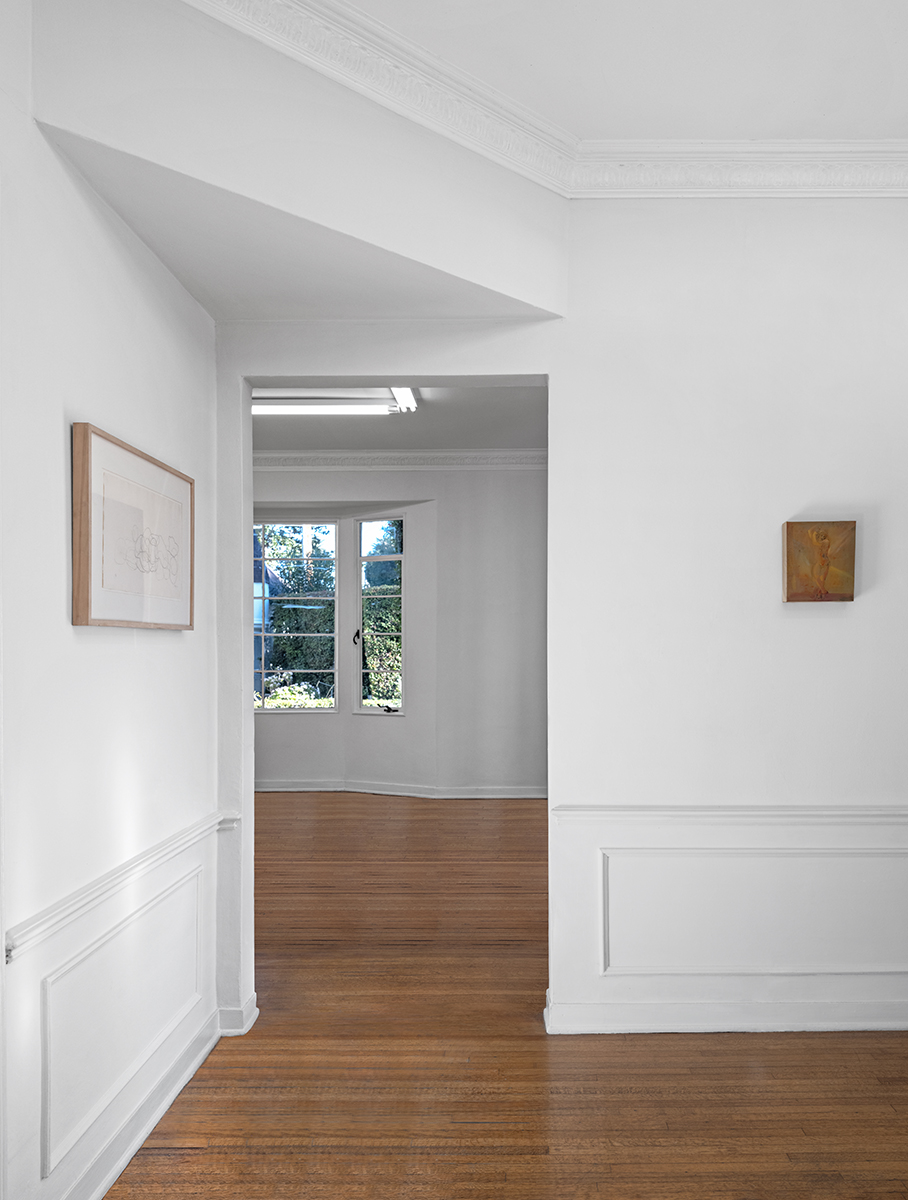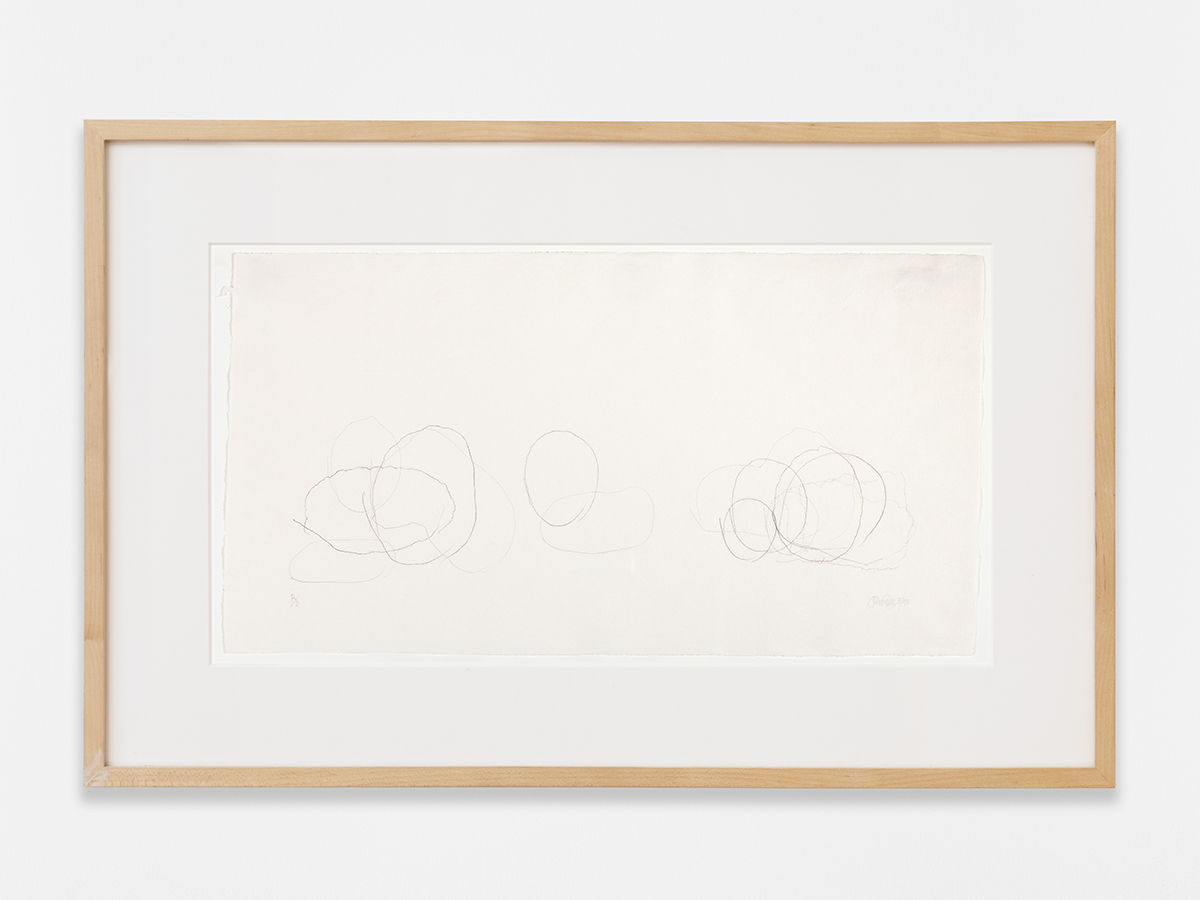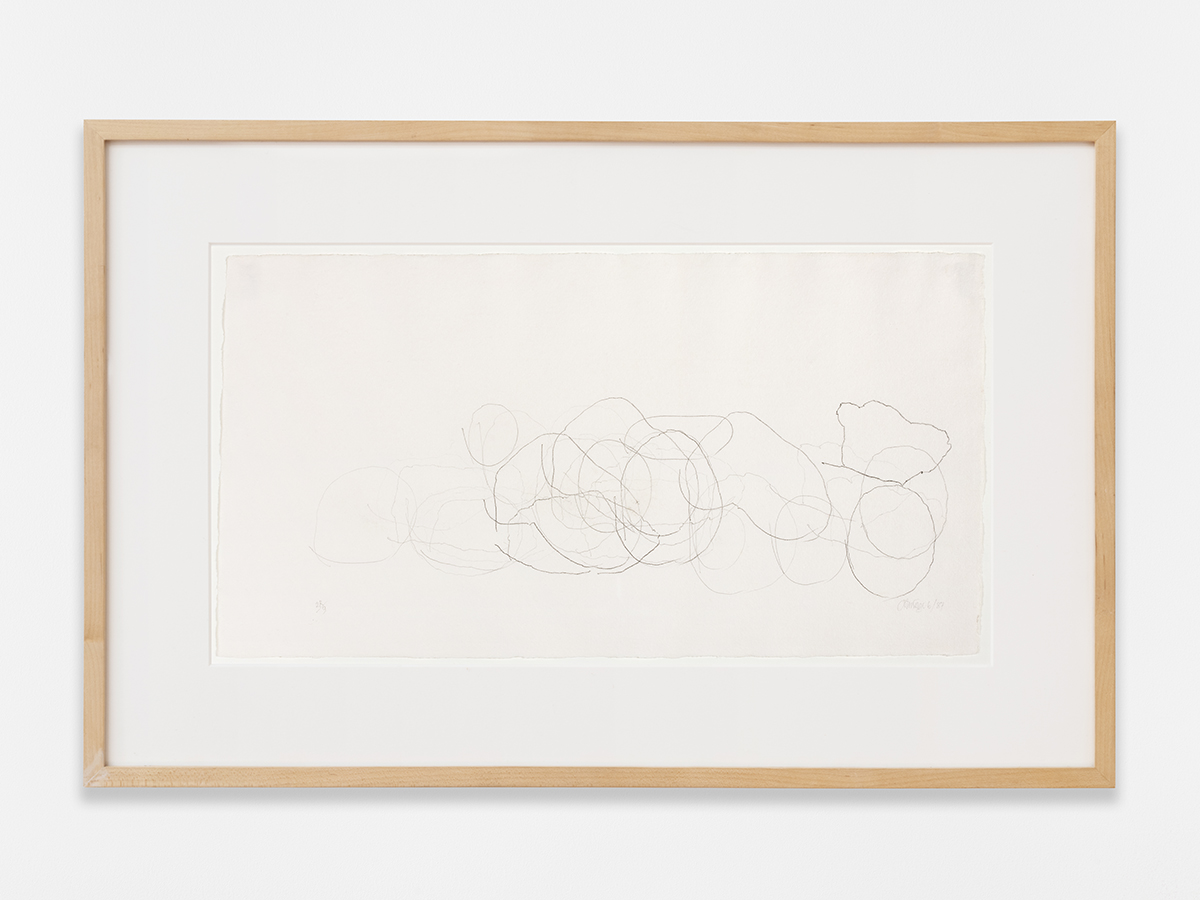The Grasshopper Lies Heavy ︎Front Page
John Cage & Leah Ke Yi Zheng
Curated by Mary Howard
CASTLE
4327 Francis Avenue, Los Angeles, CA
January 13, 2024 - February 24, 2024
“‘Oracle, why did you write The Grasshopper Lies Heavy? What are we supposed to learn?’
‘You have a disconcertingly superstitious way of phrasing your question,’.”
Philip K. Dick, The Man in the High Castle (1962)
In the fall of 1962, John Cage made his first visit to the rock garden at the Ryoanji Temple in the northwest of Kyoto. The garden was laid 462 years prior, in 1500. Containing fifteen boulders of varying sizes, the garden is arranged on raked gravel in five groups of three. It was twenty years later, at the age of seventy, that Cage began a body of work focusing on this specific Zen garden: the Ryoanji Drawings.
The Ryoanji Drawings are equal parts logic and poetry, intended to achieve maximum insight through minimal action. Cage left the drawings to chance. The way forward was decided on by the I Ching’s system of hexagrams, one through sixty-four (the I Ching or Book of Changes is an ancient Chinese divination manual that has been widely consulted for thousands of years and at its core, believed to structure the inner working of the world). Cage divided the horizontal and vertical axes of the page into sixty-four units each. He numbered stones from his own collection one through fifteen (fourteen stones and one piece of coral), and pencils from one through seventeen, ranging in hardness from 9H to 6B (17 is also the number of syllables in a haiku; a form that Cage appreciated for “condensing complex experience to terse poetry”). It was the I Ching that then decided at which crossing point of the imagined lines Cage would lay which stone and with which pencil he would use to circle it.
Like Cage, Leah Ke Yi Zheng uses the structure of the I Ching. The sixty-four I Ching hexagrams provide the ground from which Zheng explores the meaning beyond the surface of a painting. This process-based sensitivity is also embodied in the diaphanous silk surfaces on which she employs techniques of traditional Chinese ink painting, while also taking a distinct angle on post-war avant-garde European painting tradition. The silk is stretched over the irregularly shaped bars made of rich hardwoods such as mahogany and purple heart wood.
While each hexagram has a nuanced and sometimes enigmatic meaning, Zheng selects each hexagram as a motif for compositional and aesthetic reasons. Each variation on the hexagram motif can split, either towards the specific inherited description or towards its purely pictorial form. Past knowledge becomes the boundary for new unnamable discoveries.
Leah Ke Yi Zheng’s painting, No. 50 (2023), is the fiftieth hexagram of the I Ching—Ting/The Caldron. Above: Li—the clinging, fire. Below: Sun—the gentle, wind, wood. The Caldron: supreme good fortune. Success.
The painting, No. 12 (2023), is the twelfth hexagram of the I Ching: P’i/Standstill [Stagnation]. Above: Ch’ien—the creative, heaven. Below: k’un—the receptive, earth. Heaven is above, drawing farther and farther away, while the earth below sinks further into the depths. The creative powers are not in relation.
The figure of the twentieth-century Russian ballet dancer and choreographer, Vaslav Nijinsky—who was renowned for his highly sensitive and astute interpretations—hovers in a nonplace of space and time, performing as The Spirit of the Rose, a dancer who only exists in a dream. Image-making, for Zheng, can occur as a meta interiority, like the book within the book deployed by Philip K. Dick, The Grasshopper Lies Heavy within The Man in the High Castle.
Unlike Cage, Leah Ke Yi Zheng uses the I Ching as a philosophical approach to understanding and relating to her paintings on emotional and spiritual levels. Of Untitled (main) (2023), she writes:
Fleeing an early organism that has remained in the studio.
Unveiled: an unrecognizable thing in a deep chance.
A philosophical hesitation to take form, tacked in as such.
Parts arranged around midpoint: from -1 to 0 to 1...beforehand.
Sensibility by force in color.
The painting’s twin, Untitled (2023), feels almost caught in P’i, the stagnation represented by hexagram twelve; it holds us in an altogether different, yet not necessarily opposing space to Untitled (main) (2023). The creative powers are not in relation. As though appearing in a parallel dimension, Untitled (2023) is the grasshopper of Untitled (main) (2023).















